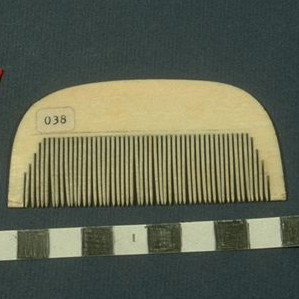The Bücking ivory comb factory

This firm, founded by Erlangen comb maker Johann Georg Bücking, was the first enterprise in Erlangen to transition from manual to industrial production. To cut the teeth of his combs, Bücking in 1835 became the first comb manufacturer in Germany to introduce machines, which still had to be made in England at the time. At first, the machines were powered by a hand-operated flywheel, and later by a horse engine. In 1845, this energy source was replaced by steam power. The steam engine installed in the Bücking factory was the very first in all of Erlangen.
Around 1880, the enterprise employed ca. 20 workers and could, in times of high demand, produce up to 300 ivory combs per day. Each year, 400 elephant tusks were processed. As one of the four well-known ivory comb factories in Germany, the company was renowned far beyond national borders at the time. Its products were exported to Austria, Russia, and northern Europe, and even to Central and South America.
When ivory became increasingly expensive towards the end of the 19th century, the company transitioned to also making combs out of celluloid. But this could only partially compensate for the decline in ivory processing, and the company slowly lost its former significance.
Ivory comb manufacture
In pre-industrial times, combs were made mainly from animal horn, but also from tortoiseshell and ivory. The first comb factories specialised in ivory, as it was the material most suitable for mechanised processing.
In Europe, the tusks used were almost exclusively those of African elephants. The centre of the ivory trade was England, from where it reached Germany via the Hamburg auction houses.
In the comb factories, the elephant tusks were first sliced crosswise. The resulting disks were then divided radially into smaller segments called Klötze ('blocks'), and finally sawn into sheets running parallel to the length of the tusk.
In the next step, the sheets were given the desired rectangular, concave, or convex shape, and ground to a sharp edge along their length. Then, the comb's teeth were sawn into the sheets. The finishing process consisted of filing, sanding, cleaning, and polishing the combs.
The sawing steps in the production process were the first to be mechanised. Especially the semi-automatic tooth cutting machine represented great progress. It not only helped to increase productivity, but also to significantly improve the quality of the product. The evenness and finesse of industrially produced combs could not be achieved by hand.
< Previous chapter | Next chapter >
